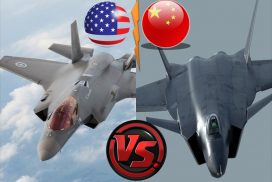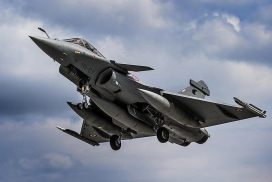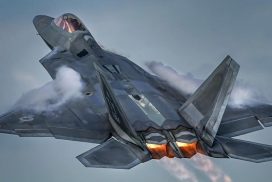 Indian Air Force faces two possible threats in the future in the form of Pakistan Air Force in the North West and the People’s Liberation Army Air Force breathing down its neck at the nation’s North Eastern boundary. PAF although a significantly smaller threat when compared to PLAAF is nevertheless a threat. PLAAF on the other hand enjoys numerical superiority which will soon tip the balance to technological and numerical superiority with the completion of the currently developing J-20, the Chinese fifth generation air superiority fighter.
Indian Air Force faces two possible threats in the future in the form of Pakistan Air Force in the North West and the People’s Liberation Army Air Force breathing down its neck at the nation’s North Eastern boundary. PAF although a significantly smaller threat when compared to PLAAF is nevertheless a threat. PLAAF on the other hand enjoys numerical superiority which will soon tip the balance to technological and numerical superiority with the completion of the currently developing J-20, the Chinese fifth generation air superiority fighter.
So the obvious question now is “How will Indian Air Force maintain equilibrium?”
The answer is quiet simple but it involves a lot of planning and development and not to put aside the amount of money involved to keep things balanced. Regardless of all the hype and noise the fact is that the PLAAF majorly consists of third generation vintage aircrafts which are obsolete in design and capabilities. Putting that aside they do have some really good equipment namely:-
Chengdu –J10 (a newer version J-10B is currently under flight testing)
Su-30MKK
Su-27
The rest are either vintage or simply a copy of the above two Sukhoi aircrafts. For example the J-11B is an outright copy of the Su-27 which is nothing short of daylight robbery.
To meet these threats IAF currently works on acquiring and gaining experience and knowledge on the fifth generation Russian stealth fighter the PAK FA. India plans on acquiring 200 of these fifth generation fighter jets. Out of the 200 50 will be single seaters and the rest will be two seaters. A naval version of the PAK FA is also on the cards.
Next in the line is the MMRCA deal (Medium Multi Role Combat Aircraft). The deal currently is valued at 12 billion US $ and as of now both the Euro Fighter Typhoon and the Dassault Rafale have been shortlisted by the IAF. Both these aircrafts have amazing flight characteristics and capabilities. They have also had a fair share of action in both Libya and Afghanistan. The winner will be awarded with a deal for 126 aircrafts initially with the expansion to a total of 200 fighters.
IAF already operates top of the line 4.5th generation fighters namely the Su-30MKI which are evidently a lot different from their Chinese counterparts, the current strength remains at 142 which will gradually become 272 of which 40 will be upgraded to carry the Brahmos supersonic cruise missiles. However all the Su-30MKI’s will be upgraded with the latest development in ECM suite and the proposed Zhuk-AE AESA radars giving it a sharp and definite edge over the PLAAF’s Su-30MKK’s.
Currently the MiG-29’s in the IAF are also being upgraded to the MiG-29UPG standard giving them a new lease of life and capabilities which include much more efficiency and effectiveness.
Dassault Mirage 2000’s currently fills the primary multirole fighter category which will be later replenished later on by the MRCA’s and the AMCA’s.
MiG-21’s serve the role of interceptors a total of 200 from which 121 have been upgraded to the bison standards further increasing their life span however all of them will be soon replaced by the HAL Tejas (LCA).
SEPECAT Jaguars and the MiG-27 full fills role of strike attack and support aircrafts IAF operates 139 Jaguars and about a 100 MiG-27’s. Let’s keep in mind that these aircrafts are still in service in a number of other air forces too. But however these too will be later on replaced by the AMCA (Advanced Medium Combat Aircraft) which itself is a 5th generation fighter.
An interesting upgrade is the development of the K-100 Novator AAM which are usually termed as the “AWACS killer” due to its range of up to 200kms. These missiles will be mated with the Su-30MKI platform which gives the IAF a decisive edge from the PLAAF since AWACS platforms will be in jeopardy with the induction of this missile into service.
So from my point of view PLAAF doesn’t really have any clear advantage over the IAF in the near future if all the pieces of the puzzle fit together it might even get outgunned by the Indian Air Force.



